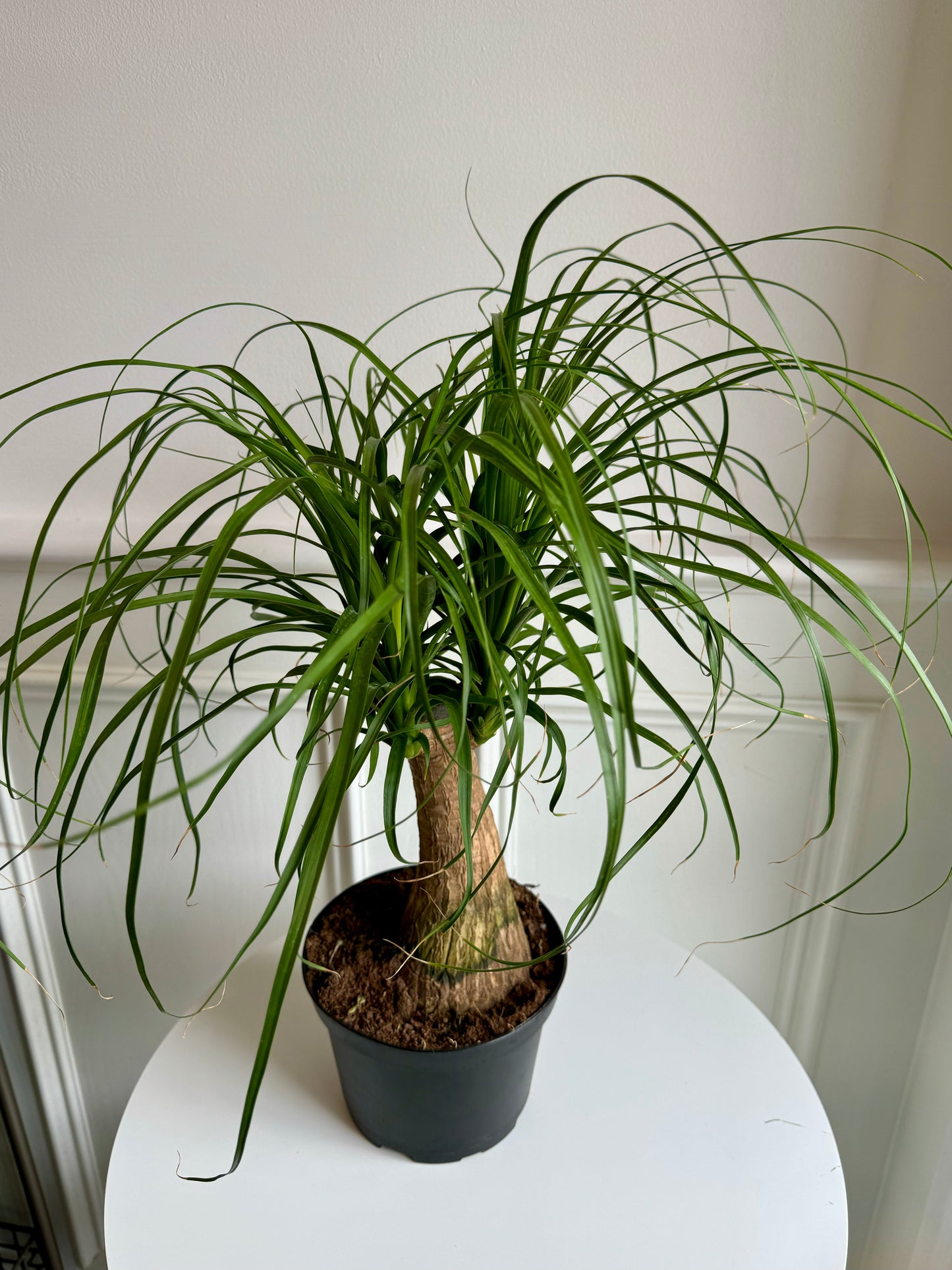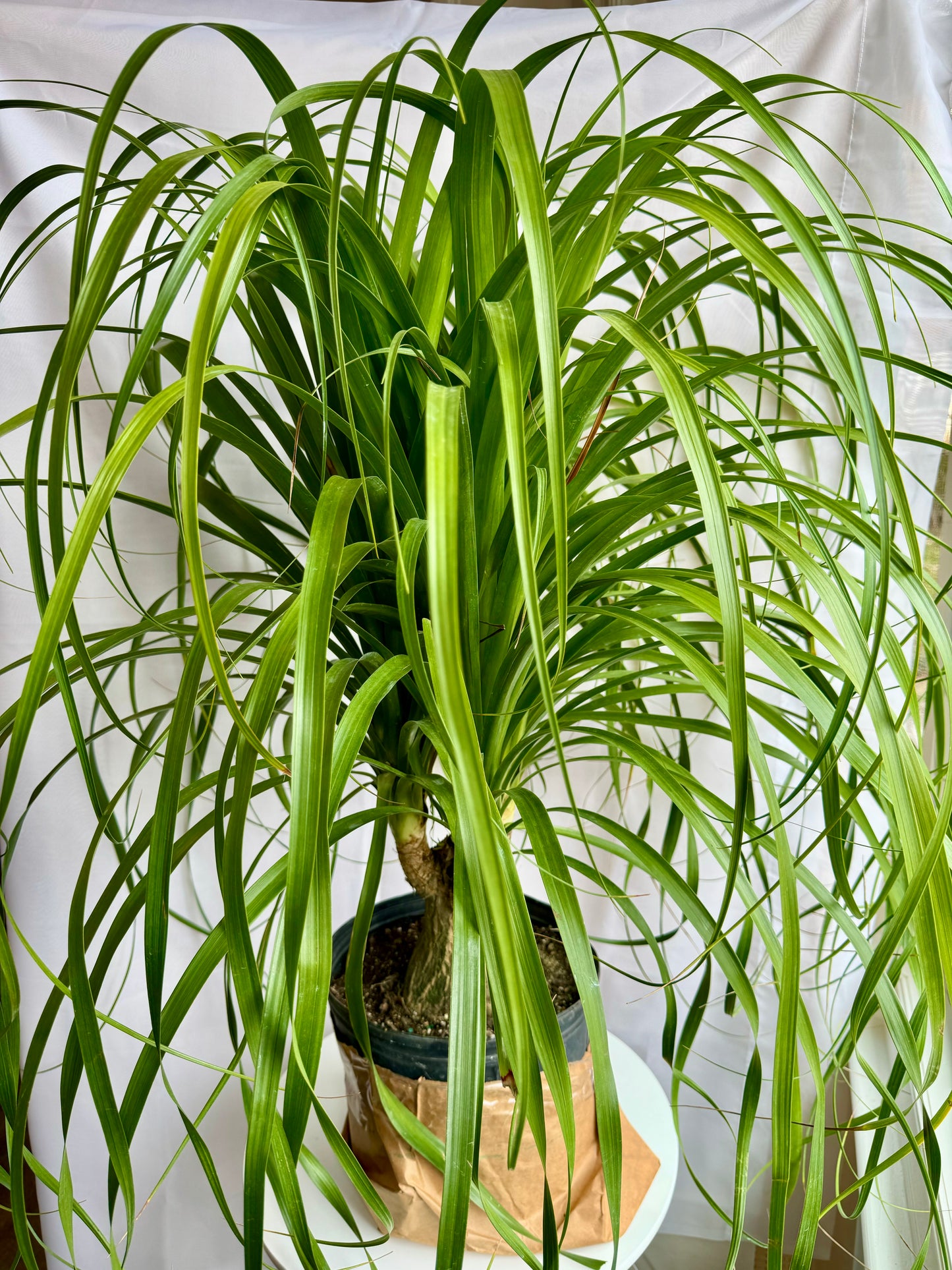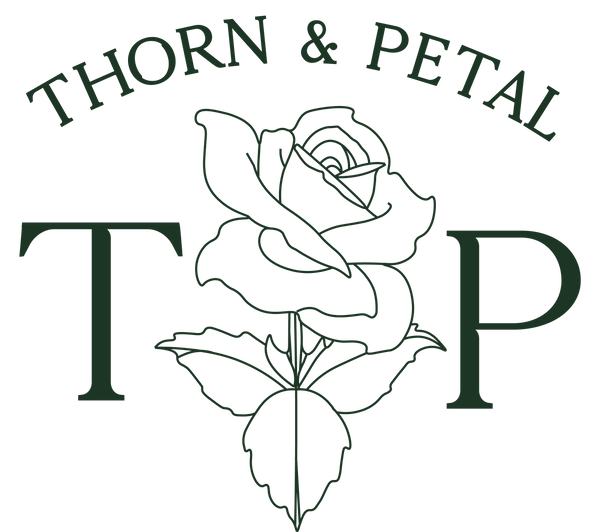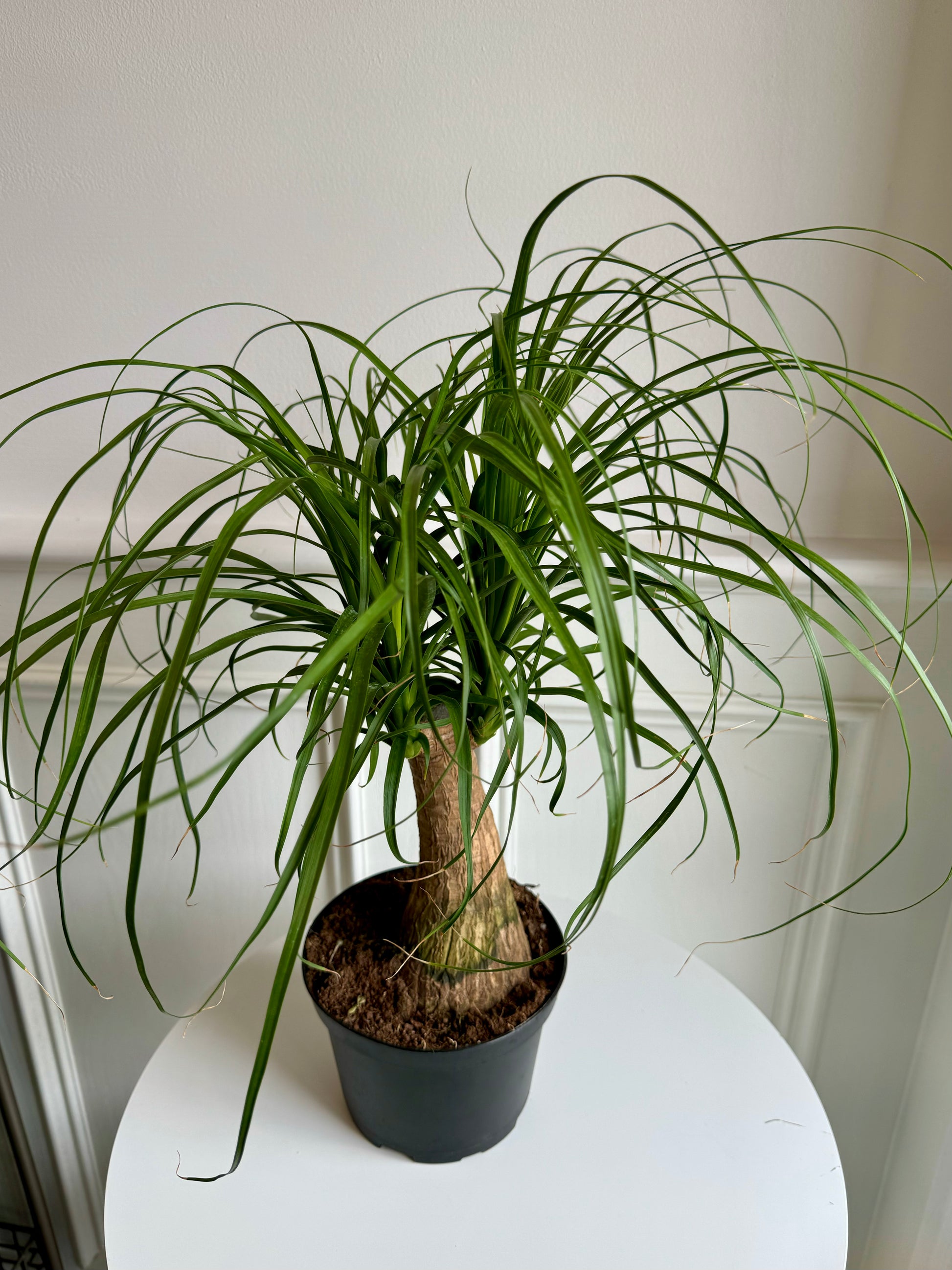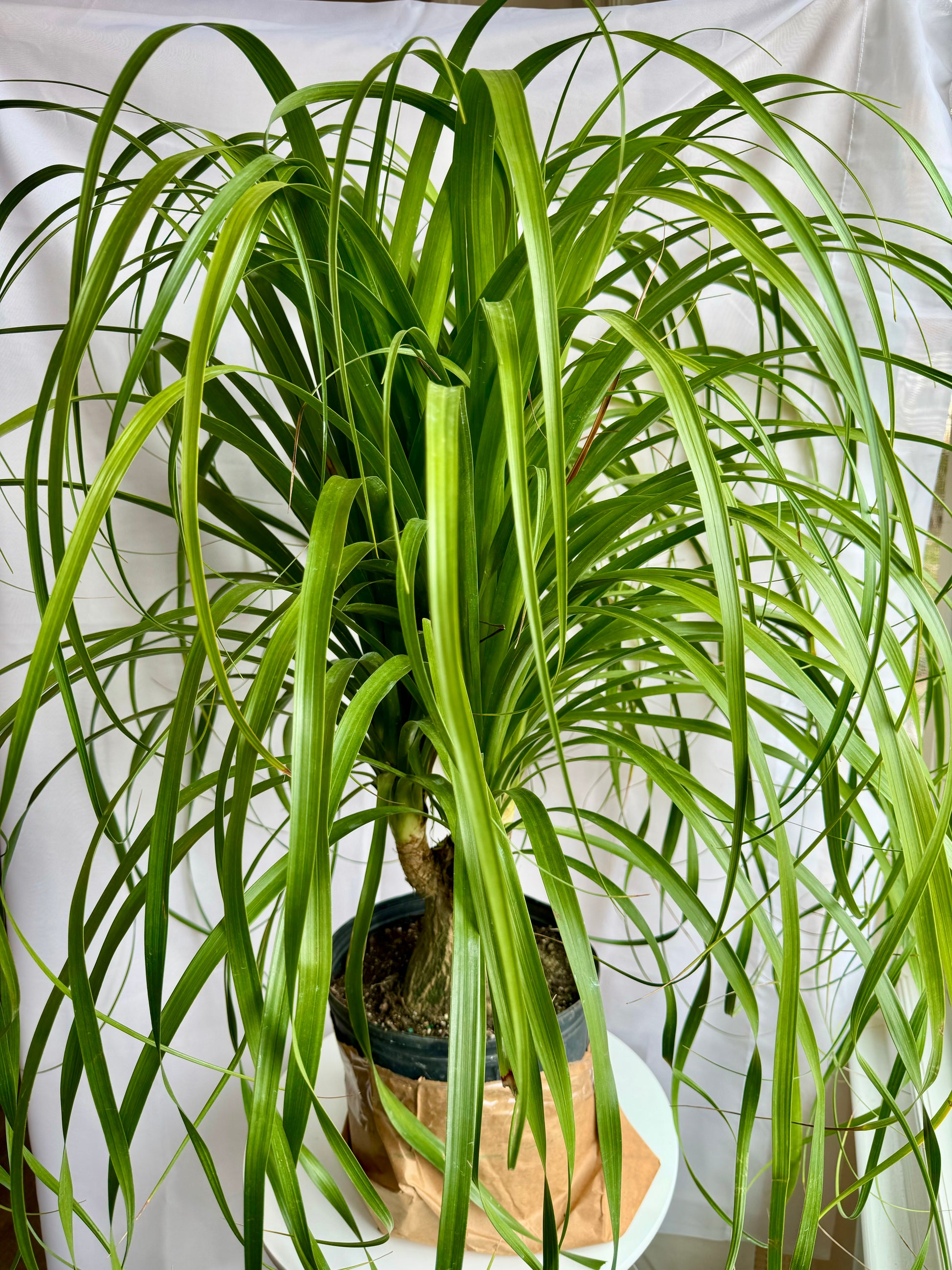Ponytail Palm
Ponytail Palm
Couldn't load pickup availability
Ponytail palms, scientifically known as Beaucarnea recurvata, are unique and eye-catching plants known for their striking appearance and ease of care. Despite their name, ponytail palms are not true palms but rather belong to the Agave family (Agavoideae). Here's some information about ponytail palms:
Appearance: Ponytail palms have a distinctive appearance characterized by their swollen, bulbous trunk that tapers upwards, resembling the shape of an elephant's foot. The trunk is topped with a tuft of long, slender, arching leaves that cascade gracefully downward, resembling a ponytail. The leaves are typically green and can grow up to several feet in length.
Native Habitat: Ponytail palms are native to arid regions of southeastern Mexico, where they grow in rocky, desert-like environments. They are well-adapted to drought conditions and are often found growing in sandy or gravelly soils.
Growing Conditions:
Light: Ponytail palms prefer bright, indirect light but can tolerate lower light conditions. They can even adapt to some direct sunlight, although excessive sun exposure can lead to leaf burn. Place the plant near a window where it can receive plenty of natural light.
Temperature: Ponytail palms prefer temperatures between 65°F to 80°F (18°C to 27°C). They are sensitive to cold temperatures and should be protected from drafts and temperature extremes. In cooler climates, they can be moved outdoors during the warmer months but should be brought indoors before temperatures drop below 50°F (10°C).
Watering: Ponytail palms have unique watering requirements due to their drought-tolerant nature. They store water in their swollen trunk, which allows them to withstand periods of drought. Water the plant thoroughly, allowing excess water to drain from the bottom of the pot, and then allow the soil to dry out completely before watering again. In general, water sparingly and avoid overwatering, as this can lead to root rot.
Soil: Plant ponytail palms in a well-draining potting mix specifically designed for cacti and succulents. A mix of sand, perlite, and peat moss works well for providing good drainage while retaining some moisture.
Fertilization: Ponytail palms are relatively low-maintenance and do not require frequent fertilization. Feed them with a balanced liquid fertilizer diluted to half strength every 4 to 6 weeks during the growing season (spring and summer). Reduce or stop fertilizing during the fall and winter months.
Maintenance: Ponytail palms are relatively low-maintenance plants that require minimal pruning. Remove any dead or yellowing leaves regularly to maintain the plant's appearance. Trim back any brown or damaged leaf tips as needed. The swollen trunk of the ponytail palm stores water, so it's essential to avoid cutting into it.
Propagation: Ponytail palms can be propagated through seeds, offsets, or stem cuttings. Offsets, also known as pups, are small offshoots that grow from the base of the plant. Carefully remove the offsets and plant them in pots with well-draining soil. Stem cuttings can also be rooted in soil or water.
Overall, ponytail palms are stunning and unique plants that add a touch of exotic beauty to indoor and outdoor spaces. With their interesting trunk structure and graceful foliage, they are sure to become a focal point in any plant collection.
Share
